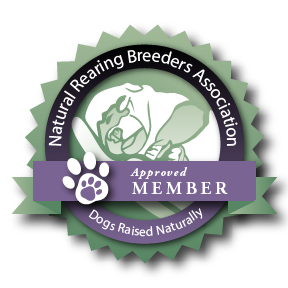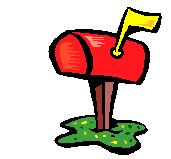CHAPTER 1 Modern Dog Feeding Myths
In my search for information on feeding dogs, I discovered a whole load of nonsense. Unfortunately, that nonsense has become part of our modern way of thinking.
Go into any bookstore and you will find half a dozen books dealing with selecting, buying, training and raising dogs. When it comes to nutrition, the advice given is all much the same and based on a series of illogical beliefs or myths.
The first myth or belief concerns the inside workings of the modern dog. It goes something as follows …..
Myth Number One
The digestive system of the modern domesticated dog is much ‘’weaker’’ that a wild dog’s, and that is why modern dogs have to be fed differently to their wild cousins.
The belief is based on nothing other than opinion. There have been no scientific studies to back it up.
On the contrary, the experiences of both scientists and numerous dog owners the world over confirm that the internal workings, including the entire digestive system, and the way food is utilised for growth, maintenance, repair and reproduction, is fundamentally the same in all dogs, both wild and domesticated.
Partly on the basis of that supposedly weaker metabolism in the modern dog, which in many people’s minds includes their teeth, there have developed two further myths…..
Myth Number Two
Dogs should NOT eat bones, and…..
Myth Number Three
All dog food should be COOKED.
Unfortunately these ideas are self-perpetuating. Dogs fed cooked and processed food and no bones will always develop a weakened immune system and poor dental health.
The next myth, number four suggests that the intelligence of the modern dog owner has declined at about the same pace and degree as the modern dog’s internal workings.
Myth Number Four
It is impossible without a university education in dog nutrition to be able to successfully feed a dog.
Because people have believed that modern dogs cannot be fed like wild dogs, they have attempted to feed dogs in all sorts of unnatural ways without bones. The results have often proved disastrous.
Those disasters have lead many people, including lots of vets to believe that feeding dogs is very difficult. This idea is reinforced by massive ‘’education’’ campaigns launched by the major dog food companies.
Daily at meal time on television, weekly at dog shows, and monthly in various dog magazines, this message is reinforced in people’s minds. ‘’You cannot feed your dog properly.. but we can!’’ And so is born the next myth…..
Myth Number Five
The best way to feed a dog is with commercial dog food.
As if that were not bad enough, such a myth gives rise to myth number six…..
Myth Number Six
Each meal you feed to your dog should be complete and balanced.
On the face of it, that one sounds OK. However, it too, like the other five myths is a modern idea devised for no other reason than to enable the sale of pet foods. It has no scientific basis. On the contrary, it violates many natural feeding laws, and in the process lays the foundation for sick dogs.
Ask yourself the question… is that the way you design your own meals? Each of them totally balanced with every conceivable nutrient present which you require? Of course you don’t. No creature since life began has eaten that way
The attempt to put all the nutrients a dog requires in one product results in much ill-health. More of that shortly.
It is by reference to those six myths or beliefs that the majority of dog owners decide how their dog(s) should be fed. The result, as I have already mentioned, is a dog population which suffers numerous unnecessary and preventable health problems.
DEVELOPING A VALID APPROACH TO FEEDING DOGS
I would like to develop with you, a new set of beliefs on which to base scientific and healthy methods of feeding dogs.
To do that, I will re-state the first myth, the one that claims the internal workings of dogs have declined dramatically since they were domesticated.
It now becomes…..
Fact Number One
Although the mind and the outward appearance of our modern dog has changed dramatically, the internal workings, including the entire digestive system, and the way food is utilised for growth, maintenance, repair and reproduction, is fundamentally the same as it’s wild ancestors.
- If that is so, a study of the foods eaten by wild dogs, should provide us with a sound basis for feeding modern dogs.
ASKING THE DOG ABOUT FEEDING DOGS
There are six words which may be used to describe the eating habits of a wolf and other wild dogs. Those words are carnivore, hunter, scavenger, opportunist, vegetarian and omnivore.
Each of those words has great significance when it comes to deciding what our modern domestic dog can and ought to eat. Let’s start off with the word carnivore.
Your Dog is a Carnivore
Dogs, like wolves love to eat other animals. They will eat their internal organs, their meat, their bones, everything. I am talking about all dogs. It does not matter whether you own a Chihuahua, a Maltese, a Great Dane, a poodle or a bull terrier-cross-Rottweiler. They all love to eat this way.
The fact that a dog is able and loves to eat meat, bones, and internal organs etc. makes your dog a carnivore.
That means all of those different parts of an animal’s carcase can and should, form part of your dog’s balanced diet.
Your Dog is a Vegetarian
The wolf and other wild dogs are also vegetarians. One of the first things eaten by a wild dog when it kills, are the stomach and intestinal contents. These contain fermenting grass and similar plant materials.
Wild dogs and modern dogs love to eat over-ripe fruit of all different kinds. They scavenge round the bottom of fruit trees. They dine regularly at the compost heap.
WARNING: Do not put corn cobs or cooked bones into compost heaps to which dogs have access – both can cause obstructions.
Many modern dog owners tell me how their dogs actually fight over fruit.
During the Second World War in Europe, many dogs survived and reproduced successfully on the stomach contents of sheep and cattle. Their health was reported as outstanding.
What this means is that both fruit and vegetables should be part of a balanced diet for modern dogs. The fruit is usually best if it is over-ripe, and the vegetables should be pulverised until they resemble the gut contents of an animal such as a sheep or a rabbit or a deer etc. More of that in chapter ten.
Your Dog is a Scavenger
Your dog is a scavenger. You only have to leave your dog alone with an open garbage can to find that out.
Dogs will eat and derive food value from practically anything. To a wild dog, soil eating is an important source of minerals. Bark from trees is an important source of fibre.
As scavengers or cleaner-uppers, wild dogs eat the left-overs from every animal that is killed or dies. This means wild dogs eat lots of bones which means your dog is adapted to eat, and actually requires to eat, if it is to remain in good health, lots of bones.
Dogs receive valuable nutrients form material that we humans find totally repugnant. Things like vomit, faeces and decaying flesh.
I constantly see farm dogs fight over the stinking rotten infected remains of a cow’s afterbirth.
A colleague of mine who regularly autopsies pigs told me that his dogs live almost entirely on raw pig bits, including the internal organs etc. His dogs are brilliantly healthy. He did assure me that they were wormed regularly.
Dogs also eat faeces. This habit is called ‘’Coprophagy’’. It may seem a revolting habit, but for dogs, it is perfectly normal.
They obviously like it, but what benefit do dogs derive from eating faeces? Faeces are a highly valuable food, consisting of the dead and living bodies of millions upon millions of bacteria.
This makes faeces an excellent source of very high quality protein, of essential fatty acids, fat soluble vitamins, particularly vitamin K, the whole range of B vitamins, many different minerals because of the soil in it, and a host of other nutritional factors including anti-oxidants and enzymes and also valuable fibre.
Many dogs that eat commercial dog food, particularly the dry dog food, have to eat faeces to stay healthy. Usually their own. Cat’s droppings are also very popular. The faeces they eat is of far greater benefit to them than the product produced by the dog food companies.
Your dog needs to be fed faeces and similar revolting material or their equivalent if it is to remain healthy.
If you do not want your dog to eat faeces, and people who kiss their dogs usually don’t, then you must provide in the diet all those nutrients which are currently missing from your dog’s diet, and which faeces supplies.
To replace faeces requires a team of ingredients like yoghurt, brewer’s yeast, eggs, polyunsaturated oils, an enzyme supplement and crushed raw vegetables as a source of fibre.
Your Dog is a Hunter
This means your dog also enjoys fresh food of animal origin. Dogs will eat anything that moves. This starts at a very young age with insects, beetles, ants, lizards, whatever walks or crawls or slithers into it’s path.
As time passes, birds and small mammals are tackled. Later on, with the help of other dogs, larger prey such as deer, sheep, goats, cattle etc. are eaten.
Your Dog is an Opportunist
This means that a hungry dog will take the opportunity to eat whatever food is available.
That is why dogs will survive and do well on an all fruit and vegetable diet, the ruminal contents of cows, sheep etc., on a carnivorous diet of whole animals, or whatever.
Many dogs survive happily on the contents of garbage cans. This has prompted many a client to ask me … ‘’Why is it that my dog with the best of modern feed and modern medical attention gets sick while those dogs which roam the streets never seem to get a thing wrong with them?’’
The answer is simple. A dog roaming the streets, seeking out its own food, is living closer to nature and the lifestyle designed for it by evolution, than the majority of pampered pooches. It may not have the same foods its ancestors had to choose from, but at the same time it is not limited by what some human or dog Food Company chooses for it. It has a much wider choice. Much of the food is raw, including vegetable peelings, rotten fruit and some bones. It gets plenty of the right sort of exercise. Purposeful exercise in the pursuit of food or whatever it chooses to do.
Your Dog is an Omnivore
The fact that your dog is a carnivore, a vegetarian, a scavenger, a hunter and an opportunist means that your dog is an omnivore.
This means a dog can eat practically anything in the way of food. In fact so far as eating goes, your dog is one of the most versatile creatures on earth.
Keep this word in mind when you are trying to decide whether or not you should feed a particular food to a dog. Many people say to me … ‘’I did not think you were… supposed…able… to feed such and such to a dog.’’ The truth is, whatever you can feed other animals can usually be fed to dogs. Whatever you can safely feed to humans may be fed to dogs.
Man and dog are both omnivores, but with totally opposite backgrounds. The dog is an omnivore with a carnivorous background, while human beings are omnivores with a vegetarian/fruitarian background.
That is why a dog has the teeth and body of a carnivore, while humans have the teeth and body of a vegetable and fruit eater, but we both have the internal workings of an omnivore.
This ability to eat similar foods is why the dog has remained a companion of man for so long. The dog will survive on just about anything we care to throw at it, even commercial dog food!
WHAT HAVE WE LEARNT FROM THOSE WILD DOG?
The first and most obvious fact is that…..
The Dog is a Bone Eater
We must conclude that not only do dogs eat bones, but that because raw meaty bones from the basis of the diet of wild dogs, they should also form the basis of the diet of modern domestic dogs.
Dogs Eat Offal
Liver, kidneys, heart, lungs, brains etc. are all part of the diet of a wild dog. If they are available, they too should form part of the diet devised for modern dogs.
Dogs Eat Vegetable Material
Sometimes in vast quantities, as when they eat the guts of a cow. They also eat fruit. Usually over ripe fruit. All the vegetables they eat are crushed, finely divided and raw. What they have never eaten in vast quantities, is something we modern humans pour down their throats by the truckload, cooked grain.
Dogs eat all Sorts of Rotten and Revolting Food
This includes such things as faeces, vomit, after-birth, rotten meat etc.. This material is often full of micro-organisms, commonly known as ‘’germs’’. This means that what we feed the modern dog should contain the nutrients present in those rotten ‘’germy’’ foods. Brewer’s yeast and yoghurt help.
Dogs Eat Fresh Raw Food
Everybody knows that dogs eat fresh foods as well as rotten foods. However, there is a big question about raw food. The fact that dogs can and will eat raw food is so self-evident it hardly needs stating, and yet, it is such a controversial issue, I discuss it at some length in the next chapter.
Dogs Achieve a Balanced Diet Over a Period of Time
Wild dogs eat what they can when they can. Because of this variety, over a period of time they achieve balance and completeness. Is that the way we should feed modern dogs?
Is it better to achieve balance at every meal, or is it better to do as nature does, achieve balance through a series of meals?
Common sense and experience tells me that nature may well be correct. In our dog feeding programme using bones and other natural products, we have never attempted to achieve balance at every meal. I am pleased to report brilliant health in our dogs.
On the other hand, I have uncovered a lot of evidence to suggest that by lumping all the components of a balanced diet together as do the dog food companies, and the people who prepare ‘’stews’’ for their dogs, we cause a wide range of health problems. (See chapter 6)
That Leaves us with Four Questions Still to Answer:
- Firstly, can a modern person feed a dog without a higher degree in dog nutrition?
You will soon realise how easy it is to feed dog, so forget about that concern.
- Secondly, what about commercial dog food? Is it better than a dog’s natural diet
I suspect you know the answer to that one. However, if you are still not convinced, I am confident you will be after reading chapter three where I discuss in detail the pros and cons of commercial dog food.
- Thirdly, food cooked or raw... Which is best?
The answer is raw, but do read Chapter 2 for more details.
- Fourthly, how can we know our dog’s diet is balanced?
That too will become clear as you read on.
By a careful consideration of the above you should be able to discover some guiding principles to use in feeding dogs. I have pulled out four of them. You can use those principles to make the feeding of dogs very simple, cheap and health promoting.
Principle Number One
- A dog’s diet should be based on raw meaty bones.
Principle Number Two
- Most of a dog’s diet should be raw.
Principle Number Three
- Apart from raw meaty bones, a dog should be fed on as wide a variety of foods as possible, and those foods should reflect the types and quantities of foods wild dogs eat.
Principle Number Four
- Instead of attempting to feed a dog all the nutrients it needs at each and every meal, the diet should be balanced over many different meals. The reasons for this will become clear as you read on.
These are the principles I shall use to develop healthy dietary programmes for dogs. However, before doing that, I need to talk about the various food items commonly available, that may be used to feed dogs.
In the next two chapters I discuss two questions raised in this chapter, the question of cooked vs raw food, and the question of the problems associated with processed foods.




